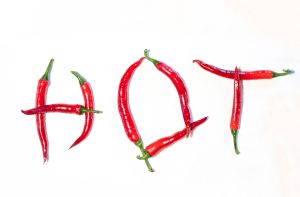 If you have rosacea, you’re not alone. It’s a common skin condition that can vary in severity that ranges from a blush to visibly enlarged blood vessels that distort appearance. It can affect many areas of the body, but most commonly affects the nose, cheeks, and neck. It produces enlarged blood vessels on the face that may look like a blush or be significant enough to create a bulbous nose. Small pus-filled bumps on the skin and burning, inflamed eyelids are two other potential symptoms. Each case is different and so is the treatment. Management includes tracking triggers, like diet, stress, or weather.
If you have rosacea, you’re not alone. It’s a common skin condition that can vary in severity that ranges from a blush to visibly enlarged blood vessels that distort appearance. It can affect many areas of the body, but most commonly affects the nose, cheeks, and neck. It produces enlarged blood vessels on the face that may look like a blush or be significant enough to create a bulbous nose. Small pus-filled bumps on the skin and burning, inflamed eyelids are two other potential symptoms. Each case is different and so is the treatment. Management includes tracking triggers, like diet, stress, or weather.
How does diet play a role in rosacea?
There are a variety of culprits that scientists believe may cause rosacea. An imbalance in the gut microbiome is one. Boosting the good microbes and limiting the population of unhealthy ones may be one way to cause symptoms to subside. Finding foods that trigger an outbreak starts by keeping a food diary. Food that causes inflammation or that dilates blood vessels may be culprits. For some, it’s spicy food. Studies show that spicy food was a trigger in approximately 75% of the cases in females. Spicy food includes food that contains capsaicin, which causes the skin to warm. It includes certain spices, such as oregano and cilantro, and hot peppers.
Other common trigger foods to avoid.
The bulbous nose often associated with rosacea is also associated with the consumption of alcohol. Alcohol is probably the most significant dietary factor. Consumption doesn’t have to be significant, even small amounts can trigger a reaction. It can occur from hard liquor, wine, or beer. Liquor isn’t the only beverage that causes flare-ups. Hot drinks like coffee, hot chocolate, and tea can also start the blushing and redness. Even foods containing cinnamaldehyde, normally associated with cinnamon, but also found in tomatoes, chocolate, and citrus fruits, can trigger flushing.
Increasing intake of certain foods can help reduce flare-ups.
If rosacea is caused by an imbalanced gut microbiome, rebalancing the microorganisms can help. That starts with consuming fiber-rich foods, like fruits, vegetables, and whole grains. These act as prebiotics to aid in increasing beneficial bacteria. Consuming more probiotic foods, like kefir, sauerkraut, and yogurt can also help. Eating food that contains healthy fat, like salmon or other fatty fish, or using zinc sulfate supplements can help.
- One survey taken in 2005 found that of the 78% of sufferers who made dietary changes, 95% of them reduced the symptoms caused by rosacea.
- Besides observation using a food diary leading to the belief gut health plays a role in rosacea, one study found that digestive problems, like IBS, SIBO, celiac disease, and IBD were common in people with rosacea.
- Certain medications may also cause flare-ups. Blood pressure medication, niacin—B3–supplements, and certain topical steroids may trigger them.
- Other rosacea triggers include exposure to sunlight, stress, weather extremes, and certain skincare products. Limiting sun exposure and adjusting skin care routines to minimize irritations can help.
For more information, contact us today at Next Level Fitness
